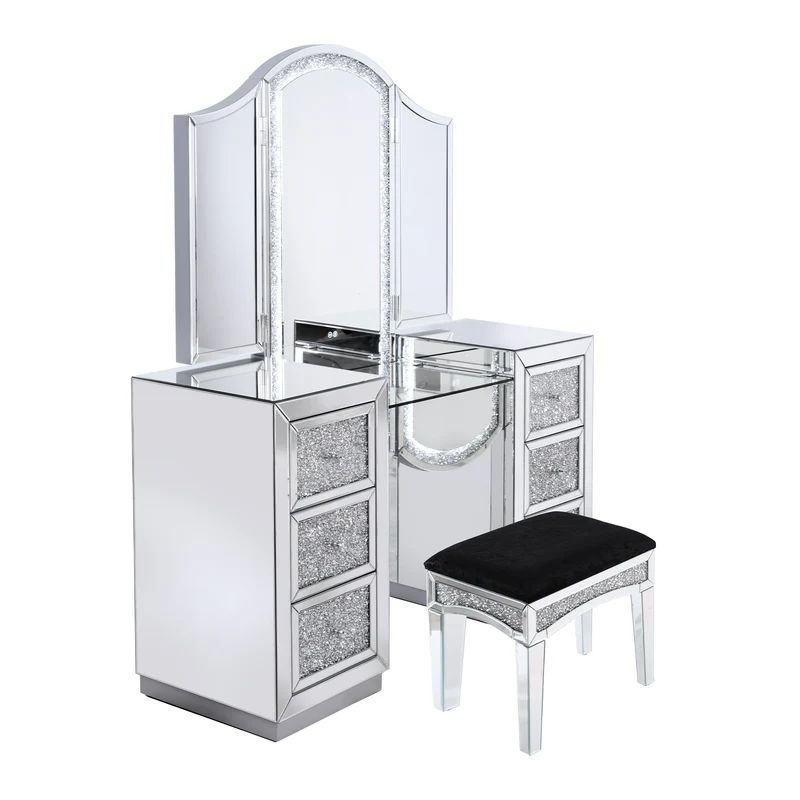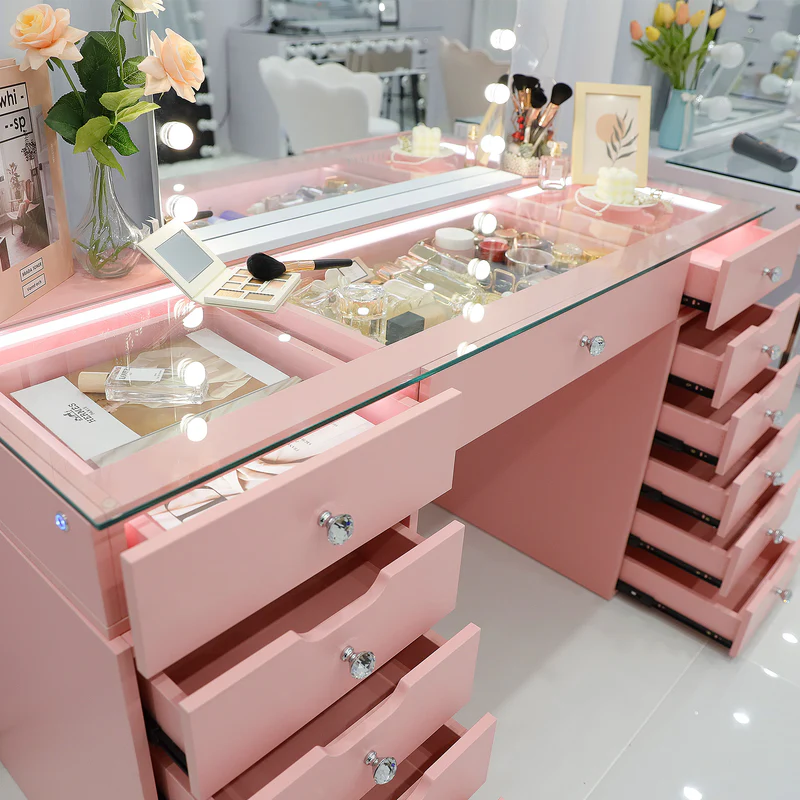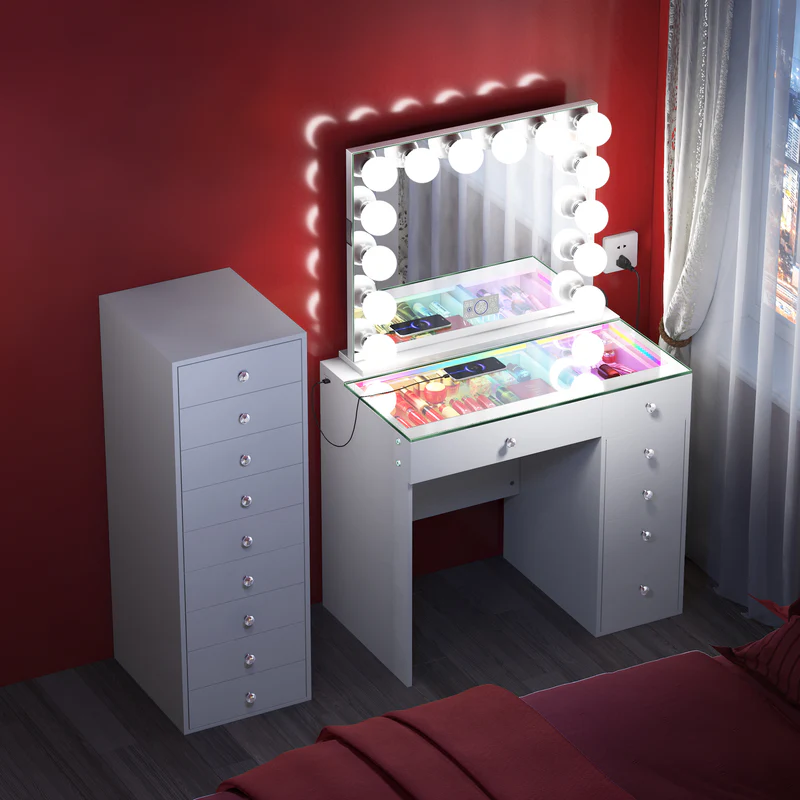Moving a mirrored dresser takes extra care to keep both you and your furniture safe. The mirrors and glass panels make it different from moving regular furniture - they can crack or break if not handled properly. This guide covers the key steps to move your mirrored dresser without damage, from wrapping it correctly to lifting it safely. With good preparation and the right tools, you can protect your dresser's mirrors and structure during the move.
Pre-Moving Preparation for Your Mirrored Dresser
Moving a mirrored dresser requires proper tools and careful planning. The right preparation makes the move smoother and safer for both you and your furniture.
Essential Tools and Materials
Before moving your mirrored dresser, gather these supplies:
- 2-3 thick moving blankets
- Several rolls of packing tape
- Large sheets of bubble wrap
- 2-4 furniture straps
- Microfiber cloths and glass cleaner
- Screwdriver set
- Work gloves
- Measuring tape
Most of these items are available at moving supply stores or home improvement centers. Get more materials than you think you'll need - running out mid-move creates unnecessary stress.
Preparing Your Dresser
First, take everything out of the drawers. Check all corners and compartments for small items that might get lost or damaged during the move. Even lightweight objects can scratch mirrors when the dresser is in motion.
Clean all mirror surfaces thoroughly with glass cleaner and a microfiber cloth. This step isn't just about appearance - dirt and dust can scratch mirror surfaces during wrapping and transport. Let the mirrors dry completely before adding any protective materials.
Document Everything
Take clear photos of your dresser from multiple angles:
- Front view showing all mirrors
- Side views
- Close-ups of any decorative elements
- How mirrors are attached to the dresser
- Any existing scratches or damage
These photos help with reassembly and serve as a record of the dresser's condition before the move. They're especially useful if you need to file an insurance claim.
How to Secure Mirrors on Your Mirrored Dresser
The mirrors are the most fragile part of your dresser and need solid protection. A secure packing job now prevents costly damage during the move.
Check Your Mirror Attachments
Most mirrored dressers secure their mirrors with metal clips at corners, full adhesive backing, wooden frame holders, or screwed-in metal brackets. Check how your mirrors are held in place and tighten any loose clips or brackets before the move. Pay special attention to any mirrors that wobble or seem unstable.
Apply Basic Protection
Start with an X-pattern of packing tape across each mirror. This basic step helps hold glass pieces together if breaks occur. Press the tape down firmly but don't pull it too tight - excess pressure can crack the glass.
Add Extra Protection Layers
Place foam or cardboard protectors on all mirror corners and secure them firmly with tape. Make sure they can't slip off during the move. Then cover each mirror fully with bubble wrap, securing all edges with tape. The final layer should be thick moving blankets, wrapped tightly with furniture straps.
The goal is snug protection without putting pressure on the glass. Each layer works together to absorb shock and prevent mirror damage during transit.

How to Secure Drawers and Structure of Your Mirrored Dresser
The next critical step in moving your mirrored dresser is to secure its moving parts and stabilize the entire piece.
Make the Dresser More Manageable
Empty drawers pose a risk of sliding and causing damage. For heavy dressers, remove the drawers completely - this reduces weight and prevents drawer damage. For lighter pieces, secure drawers with their built-in locks or wrap strong packing tape from the drawer front to the dresser frame. Store any removed parts together and label them clearly.
Address Loose Parts
Check for loose handles, wobbly legs, or unstable decorative pieces. Tighten what you can and reinforce any parts that might come loose during transit. Small pieces of foam between moving parts prevent rattling and rubbing during transport.
Check for Final Security
Test the stability of your wrapped dresser. No parts should move or make noise when you gently shake the piece. All drawers should be either removed or firmly secured. Double-check that protective materials haven't slipped out of place. Your dresser is ready for moving only when it feels like one solid, well-protected unit.
Safe Moving Techniques for Your Mirrored Dresser
A properly wrapped mirrored dresser now needs careful moving techniques to reach your vehicle safely.
Lifting from Ground Level
Stand at opposite ends of the dresser with your moving partner. Bend your knees and keep your back straight. Put your hands under the dresser's bottom frame - never lift from the top or sides. Count to three and lift together. Take small steps and keep the dresser level. For a heavy dresser, add a third person on the long side to help balance the weight.

Indoor Transportation
Place sliders under each corner - hard plastic ones for carpet, padded ones for hard floors. Keep the dresser upright and push it slowly. For tight spaces, move the front end first, then pivot the back end gradually. Clear the path ahead and remove any obstacles like rugs or small furniture.
Loading and Securing
Position your truck at the flattest loading area. Slide the dolly under the dresser's bottom and secure it with straps. Roll straight up the truck ramp with one person pushing and another guiding. Place the dresser against the truck's wall. Use tie-down straps at top and bottom. Add moving blankets between the dresser and nearby items to prevent contact damage during transit.
Important Factors for Moving Your Mirrored Dresser
Several critical factors affect how safely you can move your mirrored dresser. Planning for these conditions helps prevent accidents and damage.
Weather Protection
Rain and humidity can seep through moving blankets and damage your dresser's mirrors and wood. Cover the wrapped dresser with waterproof plastic sheets in wet weather. Avoid moving during heavy rain or snow. In hot weather, keep the dresser out of direct sunlight - heat can loosen mirror adhesives and damage wood finishes.
Space Requirements
Measure your mirrored dresser's height, width, and depth. Then measure all doorways, hallways, and stairwells along your moving path. Add four inches to your dresser measurements to account for protective wrapping. Mark any tight spots where you'll need to turn or maneuver. Remove doors from hinges if needed to create extra space.
Routes and Access
Stairs demand extra caution and at least three people to move safely - two carrying and one spotting. For elevators, check the weight limit and interior dimensions. Reserve the elevator and pad its walls. Choose the route with fewest turns and level changes. Avoid narrow spiral staircases if possible.
Professional Moving Needs
Consider professional movers for extra-large dressers, valuable antiques, or difficult access routes. Get help if your dresser weighs over 100 pounds or requires complicated disassembly. Professional movers bring proper equipment and insurance coverage for valuable furniture.
Setting Up Your Mirrored Dresser in Its New Location
Proper unpacking and placement ensures your mirrored dresser arrives safely in its new home. Handle this final stage with the same care as the moving process.
Remove Protective Materials
Remove the moving straps first, then unwrap the blankets one layer at a time. Keep all packing materials until you've fully inspected the dresser. Take off the bubble wrap last, being careful not to let the tape pull at the mirror surfaces. If you removed any drawers, keep them aside until the dresser body is positioned.
Check for Damage
Examine all mirrors for cracks, chips, or separation from the dresser. Check corners and edges for dents or scratches. Test the stability of mirror attachments and drawer tracks. Note any damage and photograph it. Compare the dresser's condition to your pre-move photos to identify any changes.
Complete Final Placement
Using cleaning skills to clean all mirror surfaces with glass cleaner and a soft cloth. Position the dresser in its final spot before replacing drawers. Level the dresser using adjustable feet or wood shims - this prevents strain on mirror attachments. Put drawers back starting from the bottom, ensuring each slides smoothly. Test all locks and handles for proper function.
Move Your Mirrored Dresser With Confidence!
Moving a mirrored dresser safely requires attention to detail at every step - from initial preparation to final placement. While the process takes time and care, following these guidelines helps protect both you and your furniture. Start with proper packing materials, secure all mirrors and moving parts, use safe lifting techniques, and plan your route carefully. Whether you handle the move yourself or hire professionals, careful preparation and protection make the difference between a successful move and costly damage.




Leave a comment
This site is protected by hCaptcha and the hCaptcha Privacy Policy and Terms of Service apply.